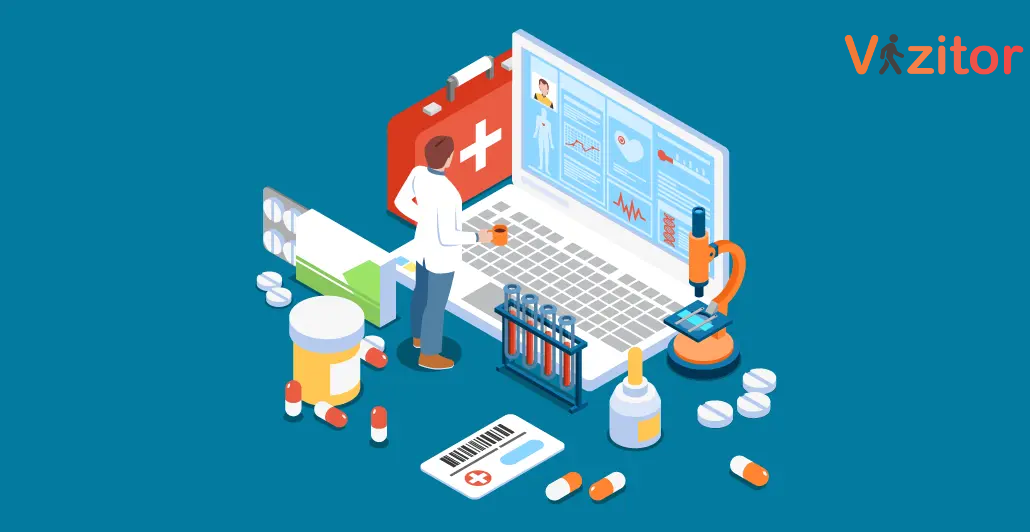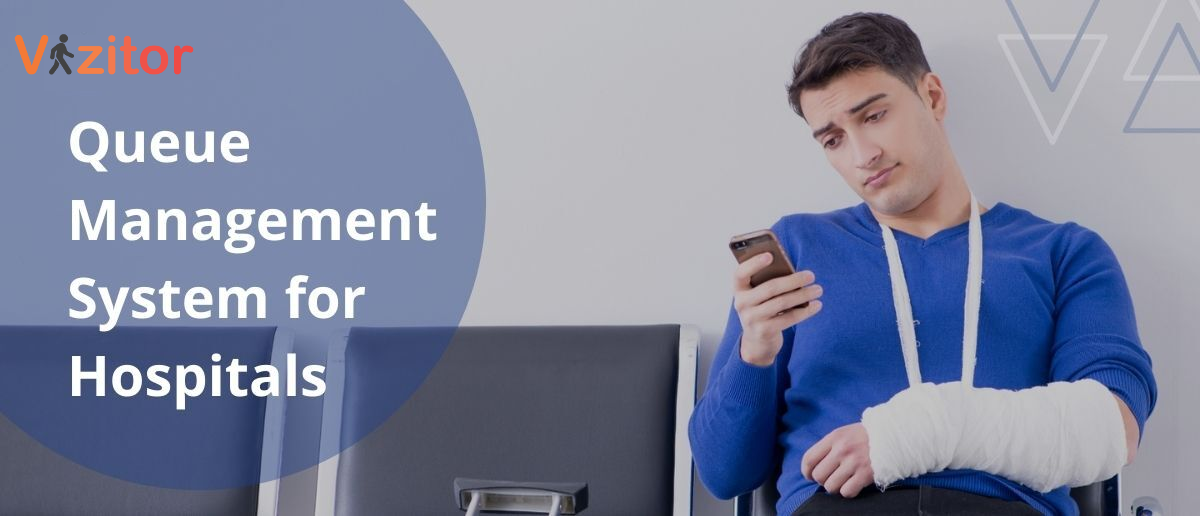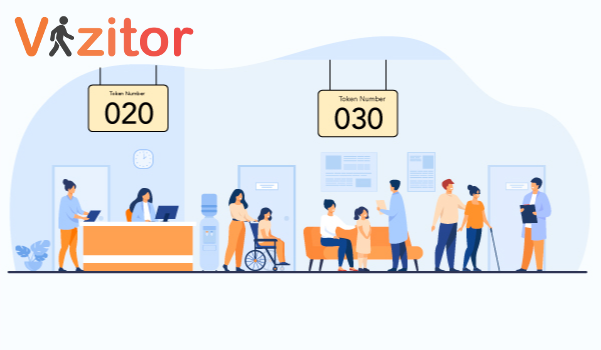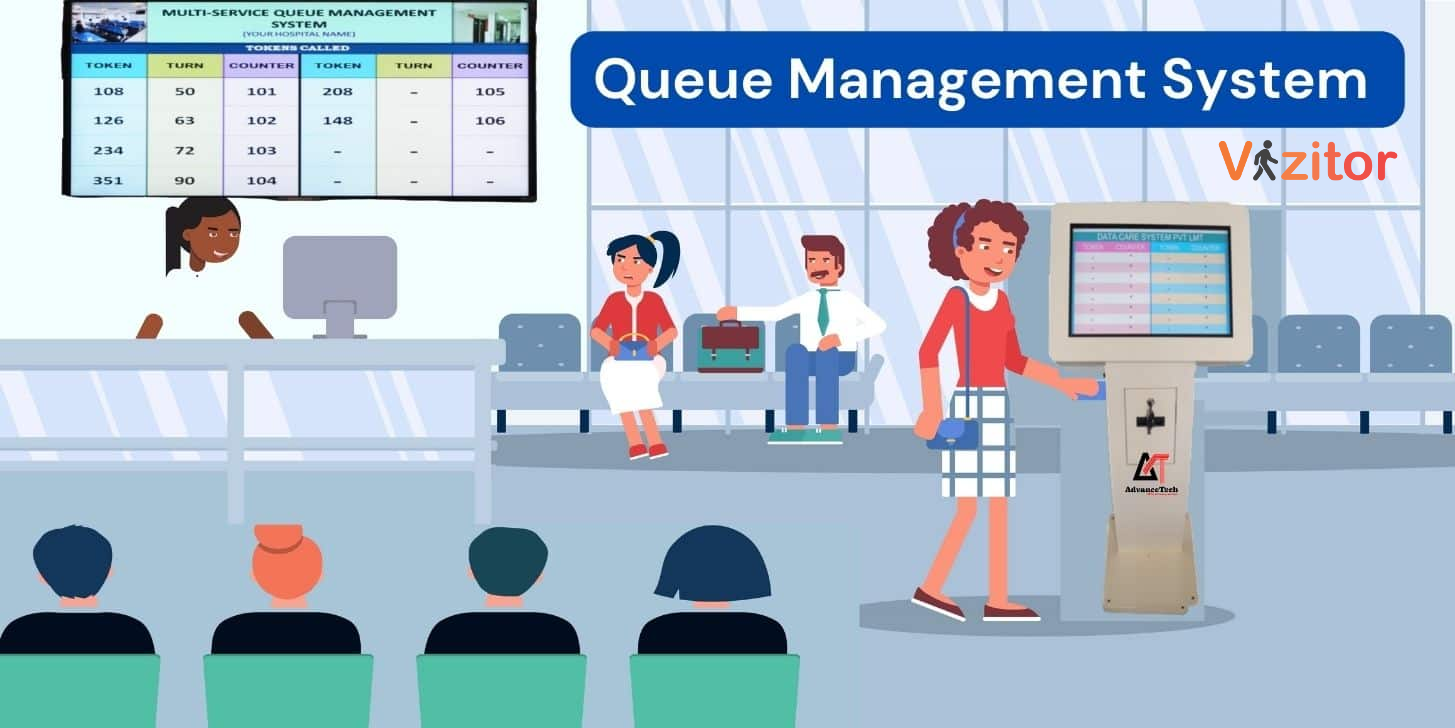Table of Content
Try Vizitor for Free!

Mon, Dec 9, 2024
Read in 5 minutes
Imagine walking into a hospital and finding the waiting room packed with people. The line at the registration desk seems never-ending, and you start wondering, “How long will this take?”
This situation is all too common in many hospitals. But what if there was a way to remove the uncertainty, improve the flow of patients, and make the experience much more pleasant?
Implementing a Queue Management System in Hospitals can revolutionize the way healthcare facilities handle patient queues, enhancing the overall experience for both patients and staff.
Let’s explore the key benefits of using a Hospital Queue Management System and why it’s essential for healthcare facilities today.
Understanding Queue Management System for Hospitals
A Queue Management System is a digital solution designed to organize and manage the flow of patients in hospitals and clinics. It helps healthcare facilities manage queues effectively, improve staff productivity, and deliver faster and more satisfying patient experiences.
By integrating a Hospital Queue System , clinics and hospitals can handle patient registration, appointment scheduling, and waiting times with ease.
By automating and optimizing the patient journey from entry to treatment, a QMS ensures smoother operations, reduced stress, and an overall more effective healthcare delivery.
Research indicates that QMS adoption can cut patient waiting times by up to 30%, improving the overall hospital experience and helping reduce patient frustration.
Key Benefits of Using Queue Management System in Hospitals
1. Reduced Patient Wait Times
Research shows that the average patient spends up to 40 minutes waiting in hospitals, with 63% of patients citing long wait times as their primary source of frustration.
A Queue Management System like Vizitor can reduce these wait times, improving overall patient satisfaction.
-
Automated Check-Ins: QMS like Vizitor reduces patient queue by automating the check-in and registration process. Patients can arrive, check in digitally, and be directed to the appropriate department without waiting in long lines.
-
Real-Time Queue Tracking: Through real-time updates on queue status, patients are informed about their expected wait times. This reduces uncertainty and minimizes anxiety for patients.
-
Patients can check in and receive a ticket that provides an estimated wait time. This allows healthcare providers to manage patient flow efficiently and prioritize individuals based on their specific medical needs.

2. Improved Operational Efficiency
-
Optimize Resource Utilization: By using data from Hospital Queue Management System to track patient flow, hospitals can allocate resources more effectively, ensuring staff and equipment are utilized where they’re most needed.
-
Reduced Bottlenecks: QMS solutions help prevent operational delays by automatically managing patient flow, reducing waiting times, and ensuring that no department or resource becomes overloaded.
-
Better Scheduling: The system optimizes the scheduling of patients, improving overall operational efficiency and reducing time wasted due to disorganization.
3. Better Patient Experience
-
Clear Communication: Patients can receive real-time updates about their status in the queue, reducing anxiety and improving the overall experience.
-
Personalized Attention: With efficient management, staff can focus more on delivering quality care instead of handling administrative tasks, making patients feel more valued.
-
Reduced Frustration: By eliminating long waits and providing transparency, hospitals enhance the patient’s visit, resulting in higher satisfaction rates.
4. Better Resource Allocation
-
Efficient Staffing: QMS systems help hospitals assign the right number of staff to the right departments based on real-time data about patient volume and needs, reducing overstaffing or understaffing.
-
Cost Savings: By ensuring that resources like medical staff, equipment, and rooms are allocated appropriately, hospitals can reduce unnecessary costs and improve the overall quality of care.
5. Enhance Staff Productivity
-
Staff Planning: Real-time data from the queue management system allows managers to effectively plan staff assignments and adjust staffing levels, helping to minimize wait times and balance the workload.
-
Minimized Administrative Work: Efficient Queue Management in Hospitals automates many administrative tasks, such as check-ins and queue management, reducing the workload for hospital staff and allowing them to focus more on patient care.
-
appointment scheduling: With appointment scheduling, healthcare staff can estimate the number of expected customers and improve access to services.
-
Better Work Environment: With fewer patient complaints and less chaos from overcrowding, the hospital staff can work in a calmer, more organized environment, improving morale and job satisfaction.
6. Increased Patient Throughput
-
Improved Patient Experience: Shorter wait times, no long queues, better communication, and a more relaxed atmosphere lead to happier patients.
-
Improved Appointment Scheduling: Hospital Queue Management System optimizes appointment scheduling by ensuring that patients are seen on time and without delays, allowing hospitals to maximize their patient throughput.
-
Efficient Management of High Patient Volumes: Hospitals facing high patient volumes can use Queue Management Systems like Vizitor to ensure a smooth flow of patients through different departments, enabling them to treat more patients without compromising care quality.
Explore: How Vizitor streamlines the check-in process

7. Enhanced Communication
-
Real-Time Updates: Hospitals can communicate more effectively with patients by providing real-time updates about their queue status through digital displays or mobile notifications.
-
Transparency in Wait Times: Patients are informed about expected wait times, reducing uncertainty and stress. This increases trust in the hospital’s operations and services.
8. Promotes Safety and Hygiene
-
Reduces overcrowding: In a healthcare setting, maintaining safety and hygiene is paramount. A Queue Management System in Hospitals reduces overcrowding and promotes social distancing by enabling virtual queues and contactless check-ins.
-
Virtual Queues: Patients can check in remotely or upon arrival, eliminating the need of physical interaction.Vizitor offers completely contactless check-in options, reducing the risk of cross-contamination.
Why Choose Vizitor?
Vizitor’s Queue Management System (QMS) is designed specifically for hospitals and clinics, providing an efficient, scalable solution to manage patient flow and enhance the overall patient experience.

With real-time queue tracking and powerful analytics, Vizitor helps optimize both the patient experience and operational management. Its customizable features allow hospitals to adapt the system to their specific needs, making it a highly flexible solution for hospitals of all sizes.
If you’re looking for a robust solution tailored for hospitals and clinics, consider Vizitor’s Queue Management System.
Learn more about how Vizitor can transform your hospital operations here.









